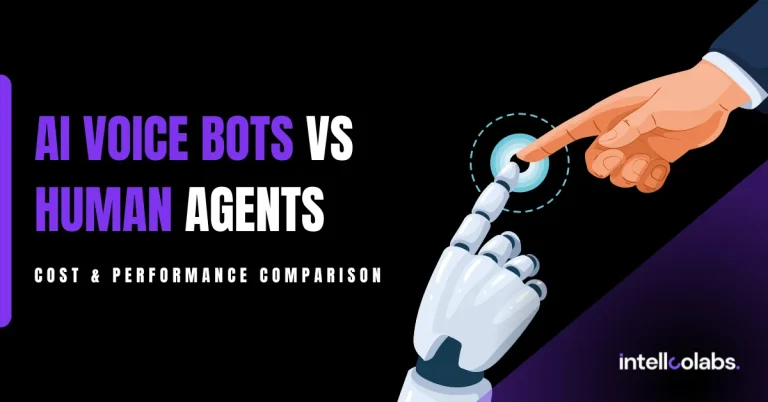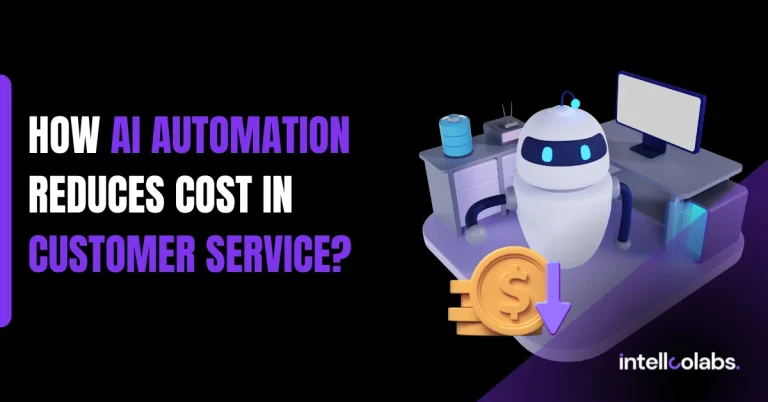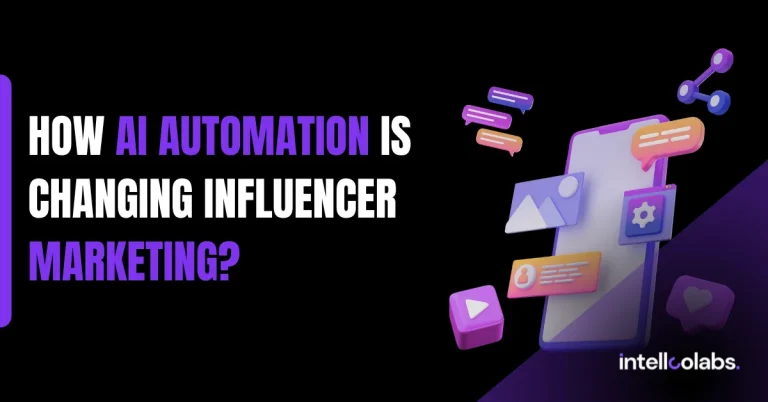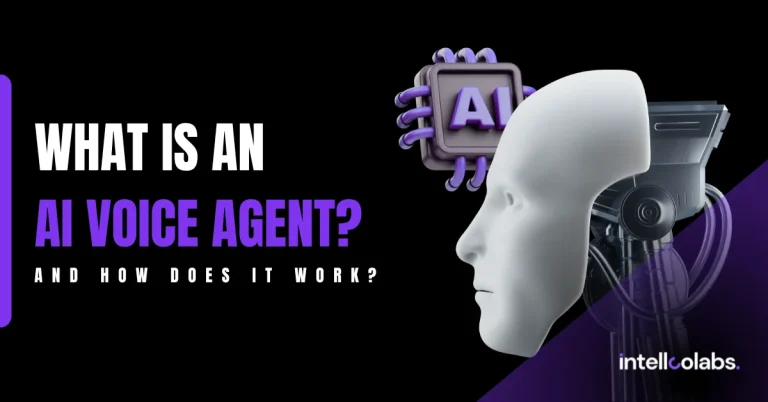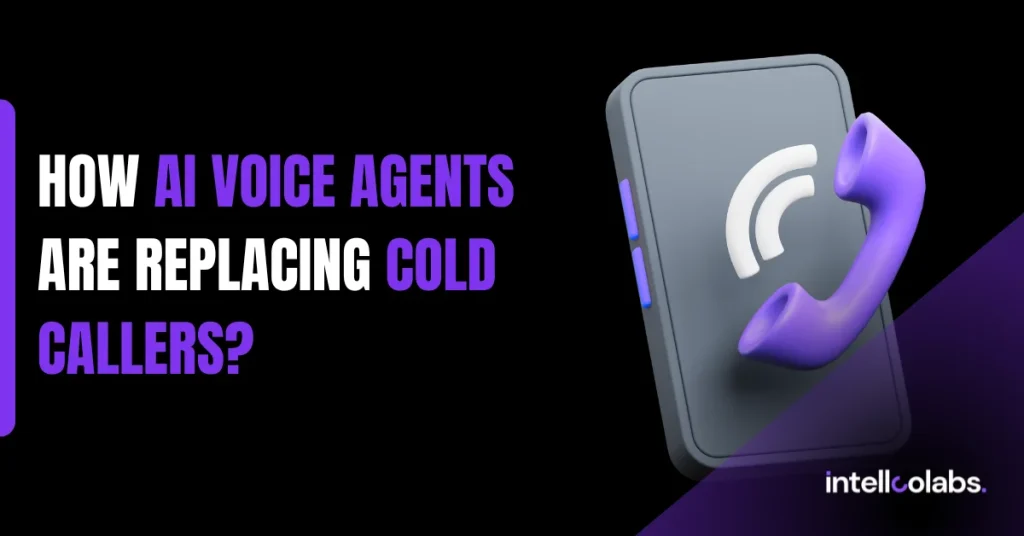
Cold calling has been a fixture of outbound sales since the invention of the telephone. Thousands of companies have built entire sales pipelines around dialing, pitching, and converting complete strangers. For decades, the model worked well enough. But now, it’s showing signs of fatigue.
Response rates have dropped. Reps are burning out faster than companies can hire and train them. Compliance risks are rising. And worst of all, the economics no longer make sense. The return on each call is shrinking, while the cost of running human outbound teams keeps growing.
That’s why AI voice agents are not just entering the conversation, they’re rapidly taking it over.
We’re not talking about robo-dialers from a decade ago or clunky IVR menus. Today’s AI voice agents sound natural, understand context, and handle conversations in real time. They scale effortlessly, cost a fraction of human callers, and never lose motivation. The cold call is evolving. AI is leading that evolution.
The Decline of Traditional Cold Calling
Despite all the tools available to modern sales teams, cold calling remains one of the most labor-intensive and expensive methods of outreach. It is also one of the least efficient.
According to a study by Gartner, the average cold call success rate is just 2.5 percent. That means a rep must make around 40 calls just to book a single meeting. Multiply that by the cost of salary, software, training, and management, and the math stops making sense quickly.
Sales Insights Lab reports that sales reps spend only 15 percent of their time actively selling. The rest is spent researching, dialing, leaving voicemails, logging notes, and navigating CRMs.
Human cold callers also face burnout. Rejection is constant, quotas are demanding, and turnover is high. It is not unusual for outbound sales roles to have 30 to 45 percent annual attrition.
In short, the traditional model is expensive, inefficient, and unsustainable at scale.
What Makes AI Voice Agents Different?
Modern AI voice agents are not auto-dialers or prerecorded messages. They are built on advances in natural language processing (NLP), speech synthesis, and large language models. This allows them to conduct real-time, two-way conversations that feel surprisingly human.
AI voice agents can:
- Understand intent, tone, and sentiment
- Adjust responses dynamically based on live conversation
- Integrate with CRMs to personalize outreach using real customer data
- Log interactions, trigger follow-ups, and even qualify leads autonomously
Tools like Vapi AI, Retell AI, Synthflow AI, and Resemble AI have made it possible to create AI agents that sound natural, handle objections, and stick to a defined sales narrative, all while processing thousands of calls a day.
How AI Voice Agents Handle Cold Calls at Scale
Imagine a team of 10 human callers making 40 calls each per day. That’s 400 calls total. Now compare that to one AI voice agent making 300 to 500 calls per hour. That’s over 3,000 calls per day from a single agent running eight hours.
This difference in scale alone reshapes what outbound sales looks like. AI doesn’t take breaks, doesn’t get tired, and doesn’t require emotional management. Once deployed, it can run continuously, iterating on scripts, capturing data, and optimizing performance based on outcomes.
Agents can be cloned and specialized for different regions, industries, or tones. For example, one AI voice agent can be trained for B2B SaaS prospects in North America, while another can pitch in Spanish for a real estate business in Mexico. Voice and delivery can be customized using voice synthesis and training data.
Benefits Over Human Cold Callers
| Metric | Human Cold Caller | AI Voice Agent |
|---|---|---|
| Cost per call | $3 to $7 | Less than $0.50 |
| Calls per hour | 20 to 50 | 300 to 500 |
| Personalization | Limited by time and bandwidth | Pulls live data from CRM or API |
| Training time | Weeks or months | Minutes or hours |
| Turnover and burnout | High | None |
| Script adherence | Inconsistent | 100% consistency |
| Availability | 8 hours/day | 24/7 |
The value proposition is not just about speed. It is about consistency, control, and adaptability at scale. Sales leaders can iterate scripts, run A/B tests, or deploy different messaging to different segments in real time.
Real-World Results from Voice AI in Sales
Companies that have adopted voice AI in their cold calling stacks are seeing measurable impact.
- A SaaS firm using Vapi AI to follow up on inbound leads reduced their cost per qualified lead by over 60 percent. Their AI agent was able to handle new leads within 30 seconds of form submission, improving conversion rates by more than 2x.
- Amplemarket, a sales automation tool, reported that combining voice AI with email sequencing helped clients achieve 3x the number of booked meetings compared to traditional cold outreach.
- Another startup in the solar industry deployed AI voice agents to re-engage aged leads. Their internal team had stopped following up due to time constraints. The AI agent made thousands of calls in a week, uncovering hundreds of interested prospects that would otherwise have been lost.
These are not theoretical pilots. They are in-production results being reported across industries.
Use Cases Beyond Basic Cold Calling
The initial assumption is that AI voice agents only handle top-of-funnel outreach. In reality, their utility extends well beyond first-touch cold calls.
Here are just a few examples:
- Post-form-fill follow-ups: AI agents can call leads within seconds of a form submission to confirm interest and book meetings.
- Lead qualification: Agents can ask scripted questions to determine budget, authority, need, and timeline (BANT framework).
- Reactivation of cold leads: AI can reconnect with prospects who went dark, using new offers or updated product messaging.
- Surveys and feedback collection: Voice agents can collect NPS data, conduct exit interviews, or gather product insights at scale.
- Voicemail drops: When a call isn’t answered, AI can leave customized voicemails automatically.
Each of these tasks, if handled manually, would require hours of human time. AI reduces that to minutes or seconds.
Common Concerns and Misconceptions
Not every company jumps into AI voice agents immediately. Some concerns are valid and worth addressing.
- Objection handling: Many believe AI can’t handle complex pushback. But thanks to advances in LLMs, AI can now be trained on objection patterns and response trees. It may not replace a seasoned sales rep, but it performs surprisingly well on early-stage calls.
- Legal compliance: In the US, outbound calls must comply with TCPA and DNC regulations. Voice AI tools must be programmed to honor opt-outs, provide clear disclosures, and log consent when required. Leading platforms build compliance features directly into their pipelines.
- Handoff to humans: AI isn’t designed to close six-figure deals. But when a lead expresses interest or meets qualification criteria, the AI can trigger a warm handoff to human sales teams. This ensures a seamless transition from automation to personal engagement.
- Technical integration: Some businesses worry that AI will require complex integrations. However, most platforms now integrate with CRMs like HubSpot, Salesforce, Pipedrive, and others via APIs or native plugins.
The Future of Cold Outreach with AI
Voice agents are not the end of salespeople. They are the end of repetitive, low-impact sales activity.
In the future, AI voice agents will integrate tightly with other outbound channels. Imagine an agent calling a lead, logging the result in CRM, triggering a personalized email sequence, and updating a Slack channel—all autonomously.
AI personas will become more advanced. You might deploy a calm, empathetic voice for financial services, and a high-energy persona for B2B SaaS. Tone, vocabulary, and pace will be customizable for each use case.
Multilingual outreach will become mainstream. One AI voice agent can run campaigns in English, Spanish, and French simultaneously, using localized tone and culturally appropriate phrasing.
Eventually, entire SDR functions will be handled by AI systems connected to CRM data, sales intelligence tools, and calendar automation. Your only human input may be defining strategy, reviewing analytics, and closing deals.
Conclusion
Cold calling is not dying. It is transforming. And AI voice agents are at the center of that transformation.
They don’t get tired. They don’t forget their lines. They don’t take vacation. Most importantly, they unlock a level of scale and speed that human teams simply cannot match without massive investment.
Forward-looking companies are already making the shift. They are booking more meetings, spending less money, and building more efficient funnels by using AI where it makes the most sense.
This isn’t about replacing humans. It’s about freeing them to do what they do best—building relationships, closing deals, and creating value. AI takes care of the grunt work. Sales teams do the real work.
The future of outbound sales is already here. It sounds like a human, responds like a human, and books demos while your team sleeps.

